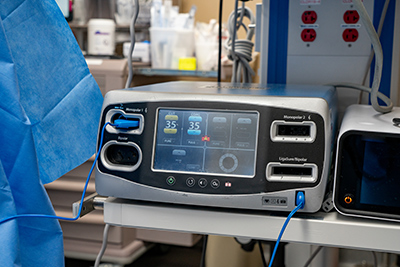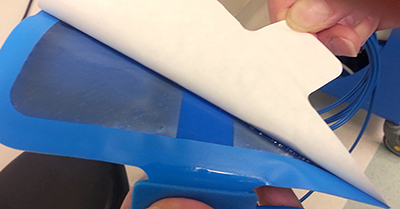The Electrosurgical Unit
By: Emily McKisson, MS, BSN, RN, CNOR
Published: 12/20/2023
After your patient was successfully placed under general anesthesia, your surgical team begins to drape the patient. You patiently wait at the surgical field for your next step: plugging in the necessary devices for the procedure. The first attachment you receive is the three-pronged connection for the electrosurgical unit (ESU), or Bovie machine. The ESU is the most widely used and cherished piece of surgical equipment, but it is far more complex than many of us realize.
A Brief History
William Bovie, an American scientist and inventor, was not the first person to utilize electricity in surgery. It was already understood that electricity above certain frequencies could cut tissue without causing muscular contraction. However, it was Bovie's collaboration with Harvey Cushing, the father of neurosurgery, that brought him universal recognition. In the 1920s, neurosurgery, particularly brain surgery, faced challenges due to uncontrollable bleeding. With the introduction of the Bovie machine, Harvey Cushing was able to successfully operate on brain masses, greatly advancing his specialty.1
The Basics
ESUs are incredibly popular because they offer two distinct energy sources within a single unit: monopolar and bipolar (Figure 1). Monopolar energy, which delivers energy directly from the ESU to the patient through the electrosurgical pencil or tip, is the most commonly used. The energy delivered can cut or coagulate the tissue in contact with the tip. Any excess energy travels through the patient's body and is returned to the ESU.

Since the energy flows in one direction, the patient requires a dispersive electrode pad (Figure 2) to be placed on them, serving as a grounding mechanism. Grounding provides a pathway for the electric current to return to the ESU. One advantage of monopolar energy is its ability to be delivered at high frequencies, which is especially beneficial in scenarios where significant bleeding may occur. However, monopolar energy can cause tissue charring and the formation of the recognizable ESU smoke, which efforts are made to filter.

Bipolar energy is another option provided by the ESU. One major difference between monopolar and bipolar energy is that bipolar energy requires a delivery mechanism, such as a pickup, that has two tips: one to deliver the energy and another to return it. The energy is delivered between these two tips, allowing for precise control over the location of impact; the excess energy is returned to the tip.
Because the energy is returned through the delivery mechanism, a dispersive electrode pad is not needed. Bipolar energy is commonly used in areas with delicate tissue, such as the brain, or in situations where the surgical team wants to avoid tissue burning or charring. It is typically delivered at lower frequencies and with lower settings. Bipolar energy can be used as an alternative for patients with implanted cardiac devices like pacemakers (Figure 3), as the energy delivered does not travel through the patient, reducing the risk of disrupting the device's settings. It's crucial to be aware of and implement best practices for patient safety when using ESUs (Table 1).

Table 1. Key Takeaways for Electrosurgery Safety2
Key Recommendations | Supporting Information |
| Remove metal jewelry from the patient. |
|
| Place cords for the ESU device and dispersive electrode pad away from other cords and one another. |
|
| Mitigate risks to patients with implanted electric devices whose procedures may require the use of an ESU device. |
|
| Follow institutional policy if the ESU device is malfunctioning. |
|
| When using an argon-enhanced coagulation device, follow safety protocols for monopolar energy. |
|
| Use antistick phospholipid solutions to wipe cautery devices. |
|
Editor's note: AORN does not endorse any commercial company’s products or services. Inclusion or exclusion of products in this article does not constitute an endorsement or review (implied or otherwise) by AORN of the quality or value of such products, or of the claims made by its manufacturer.
References
- William T. Bovie. Wikipedia. Accessed August 15, 2023. https://en.wikipedia.org/wiki/William_T._Bovie
- Guideline for electrosurgical safety. In: Guidelines for Perioperative Practice. Denver, CO: AORN, Inc; 2021: 83-108.
AORN Resources
AORN members can access:
Electrosurgical Safety: Guideline Essentials | AORN
Electrosurgical Safety: Clinical FAQs | AORN
Best practices for reporting electrosurgical unit malfunctions - AORN Journal
Guidelines in Practice: Electrosurgical Safety - AORN Journal
Guideline Quick View: Electrosurgical Safety - AORN Journal

